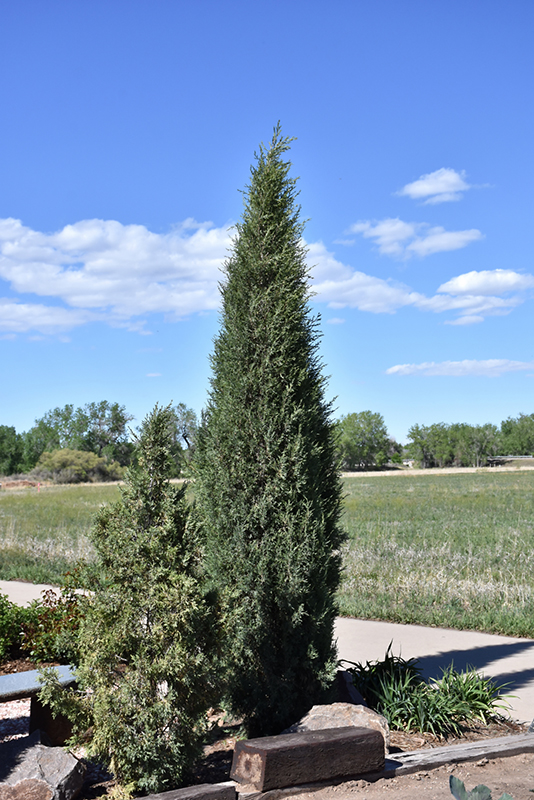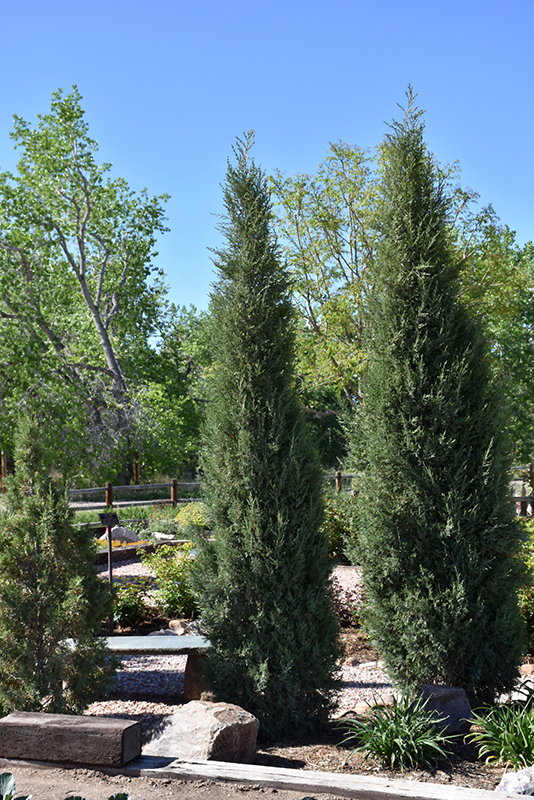Woodward Columnar Juniper
Juniperus scopulorum 'Woodward'
Height: 20 feet
Spread: 4 feet
Sunlight:
![]()
![]()
Hardiness Zone: 3a
Other Names: Rocky Mountain Juniper, Colorado Redcedar
Description:
An elegant, columnar evergreen presenting soft textured dark green foliage that turns grey-blue in winter; stands up well to high wind and snow load; tolerates xeric conditions; excellent for landscape articulation or as a privacy screen
Ornamental Features
Woodward Columnar Juniper is primarily valued in the landscape for its rigidly columnar form. It has attractive dark green foliage with hints of silvery blue. The scale-like sprays of foliage are highly ornamental and remain dark green throughout the winter.
Landscape Attributes
Woodward Columnar Juniper is an evergreen tree with a strong central leader and a narrowly upright and columnar growth habit. It lends an extremely fine and delicate texture to the landscape composition which can make it a great accent feature on this basis alone.
This is a relatively low maintenance tree, and is best pruned in late winter once the threat of extreme cold has passed. Deer don't particularly care for this plant and will usually leave it alone in favor of tastier treats. It has no significant negative characteristics.
Woodward Columnar Juniper is recommended for the following landscape applications;
- Accent
- Vertical Accent
- Hedges/Screening
- Windbreaks and Shelterbelts
Planting & Growing
Woodward Columnar Juniper will grow to be about 20 feet tall at maturity, with a spread of 4 feet. It has a low canopy with a typical clearance of 1 foot from the ground, and is suitable for planting under power lines. It grows at a slow rate, and under ideal conditions can be expected to live for 70 years or more.
This tree does best in full sun to partial shade. It prefers dry to average moisture levels with very well-drained soil, and will often die in standing water. It is considered to be drought-tolerant, and thus makes an ideal choice for xeriscaping or the moisture-conserving landscape. It is not particular as to soil type or pH. It is somewhat tolerant of urban pollution. This is a selection of a native North American species.

